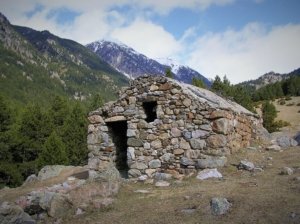La Tosa d’Alp
La Tosa d’Alp
La Tosa or Tossa d’Alp is perhaps the most used mountain in the Cerdanya due to the fact that the Alp-2500 ski resort is located there, which includes the ski resorts of La Molina and Masella. It is very popular because a number of ski lifts, including a cable car, lead to the culminating plateau, where the “Niu de l’Àliga” refuge is located. However, if you leave the slopes a little, this human presence disappears and you enter into Cadí-Moixeró Natural Park. The overview from the summit, on the other hand, covers the whole of Cerdanya and a good part of Catalonia.
Technical Data
Access: From Alp take the road that leads to the reception of the ski resort of Masella. Then continue to another road on the right until the Coma Oriola car park ends.
Start: Coma Oriola car park.
Difficulty: Easy
Maximum altitude: 2,537 m
Elevation gain: 615 m
Total duration: 2 hours (1.30 hour one way / 0.30 hour return)
Time of year: Spring, summer and autumn.
Notes: In the winter, the ascent is not recommended because you must go through the ski area and on the highest part you can find frozen snow, only accessible with an ice axe and crampons.
Route
From the car park at Coma Oriola (1,940 m) you have to go to the hole of the same name, following the ski slope that runs along it, which becomes steeper as we go up.
Near the summit of Tossa de Das (2,448 m, 1 h 15 min), we find the remains of the miners’ hut and cross the old track that led to La Mena, a manganese mine.
The final ascent is undertaken, with a notable but short incline, to the TV antenna and shortly afterwards to the geodesic turret at the top of La Tosa (2,537 m, 1 h 30 min). From up here, on a clear day, you can see the Collserola antenna and, to the west, the pre-Pyrenees mountain systems of Aragon, such as the Turbó, the Cotiella or the Guara mountain range.
Map and altimetry




















